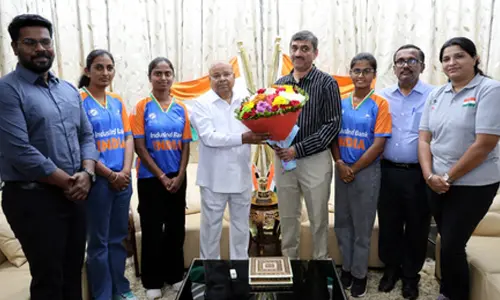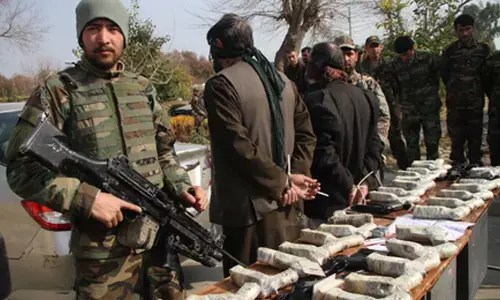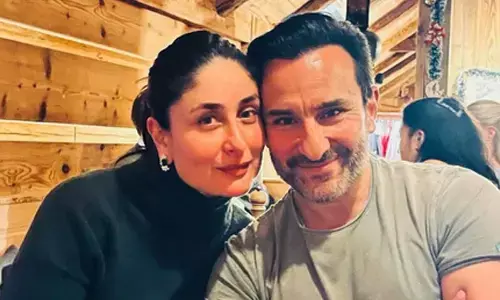The moving saga of a coolie woman
The moving saga of a coolie woman. That was a plaintive song throated for generations by the descendants of indentured laborers in Guiana recalling their poignant parting from India, their original motherland.
Listen, oh Indian, listen to the story of us émigrés, The émigrés who cry constantly, tears flowing from their eyes.
When we left the ports of Calcutta and Bombay, Brother left sister, mother left daughter.
In deep love of the mother country we cried; Water flowed from our eyes...
Painful is our story, choking is our voice.
That was a plaintive song throated for generations by the descendants of indentured laborers in Guiana recalling their poignant parting from India, their original motherland. From a situation of rootlessness and existential crisis to the one where the Indian community could flourish with names like VS Naipaul (Nobel laureate), Cheddi Jagan (former President of Guyana), Sir Shridath Ramphal (former Commonwealth Secretary General), and Shivnarine Chanderpaul & Alvin Kallicharran (former captains of the West Indies cricket team), it was an odyssey of survival and reconstruction.
Beginning 1838 up to 1918 over half a million ‘coolies’ from India were indentured and shipped to thirteen British colonies in the Caribbean, in addition to Mauritius, East Africa, Natal, Seychelles, Reunion and Fiji elsewhere. And out of the present 8.5 lakh population of Guyana (earlier Guiana), the Indians constitute 44%. By dint of their hard work, the coolies, just within a decade, brought sweetness to the foredoomed sugar industry, the mainstay of Guianese economy, despite bitterness in their own lives. And women played a major role in this saga. The book ‘Coolie Woman’ by Gaiutra Bahadur, an Indo-Caribbean American writer, is a tribute capturing their hardships, humiliations and endurance in what is a memoir with biographic and autobiographic layers.
Though the epithet ‘coolie’ applied by the British to the Indian workers is a pejorative from an imperial legacy, the writer sticks to it in a spirit of defiant self-assertion as inspired by the proud Coolitude movement – a la Negritude - initiated by the Mauritian poet, Khal Torabully. The coolie was held inferior even to the African slave-descendants. Even after they became teachers or lawyers generations later, they were still called coolies. “My great-grandmother was a high-caste Hindu... But she left India as a ‘coolie.’”
Two-thirds of the indentured women that left India were unaccompanied by men, and Gaiutra’s great-grandmother Sujaria who emigrated in 1903 was one such. Women groaning under poverty and domestic exploitation as also young widows and prostitutes formed part of them. Many of them assumed false identities for safety. The recruiters were often dishonest luring the gullible and resorting even to kidnaps. Many were permanently severed from their families in India.
Gaiutra Bahadur born in Guyana and later on having migrated to the US took upon herself the task of tracking down the roots of her great-grandmother to a remote village in Bihar. Dredging the data, combing the archives, browsing history and literature, visiting and revisiting places across continents, talking to people, trying to find answers to endless questions and interlinking them, she did painstaking and meticulous research, to satisfy her irrepressible urge to connect to the lineage from a country of ‘seers and saints.’ Her last name ‘Bahadur’ is a diminutive of Lalbahadur, her grandfather’s name. It is not a surname, and most emigrants had lost it in a melting pot of uniformity and assimilation.
Gaiutra who visited India in 2005 “wanted to experience what it felt like to be in the matrix of the culture that had shaped me from a distance, through Hindu gods and Hindi love songs.” She went there as the granddaughter of Lalbahadur, “a strict Hindu” whose legacy to his children “was a traditional morality as tough as that impervious timber.” Though “dressed conservatively” and “wanted to pass as an Indian,” she faced a few odd moments, because of the natural American streak of manners in her. “Because I looked Indian, I was expected to act Indian. I was held to a different standard than other Americans.”
The emigrants’ voyage abroad was multi-hazardous. They were crowded together and given measly and unhealthy food. The crew, both the British and the black, seduced women by dangling biscuits. The jealousies amongst the crew developed into mutinies. The emigrants suffered from disease and severe seasickness, resulting in mortalities. The ship’s surgeon was supposed to do moral policing as well but sometimes there were incorrigible lechers among them like Holman, who despite a spate of complaints against him, could strut about with impunity, thanks to lenient and racist superiors. Despite proclamation and expectation of a “Victorian and Edwardian England” morality among the British officials, the incidence of venereal diseases was high in them and prostitution thrived like never before.
Even while at the plantations, the coolies’ sufferings and exploitation did not end. “Since planters did not provide toilets, estate workers had to relieve themselves in the open,” and such women were vulnerable to the lustful eye. They also had to contend with the Negro who “hates the coolie as a hard-working interloper and despises him as a heathen” devoid of “British notions of civilisation” which the “African descent had internalised.”
Adversities like these loosened the caste moorings of the coolies and forged unity and assimilation among them, and they began “to spin the threads of a novel identity,” evolving into a homogeneous entity, unlike in their country of origin where caste dissensions and prejudices continue unabated. Despite lack of education and language problem, the emigrants did not lose their cool and survival instinct. They endured the sufferings reflective of the humility and staying power of the grass which survives a wild storm unlike the big trees which get uprooted. Their sacrifices have paved the paths of success and prosperity to their posterity.
The writer, herself a progeny of a coolie, chronicles the tales of woe of many a coolie woman by viewing and treating the subject with such infectious empathy and sympathy that it makes the reader salute them including those who were obliged to go astray, for lotuses bloomed out of the morass of “moral degradation of the indentured” marked by “wife murders, suicides, illegitimacy and women changing husbands as they changed their skirts.”
The narration criss-crosses relevant socio-political developments in the British colonies as well as India whose anti-indenture movement gave a decent burial to the trade in 1919. The 39 illustrations in the book are a value addition.
Next Story














